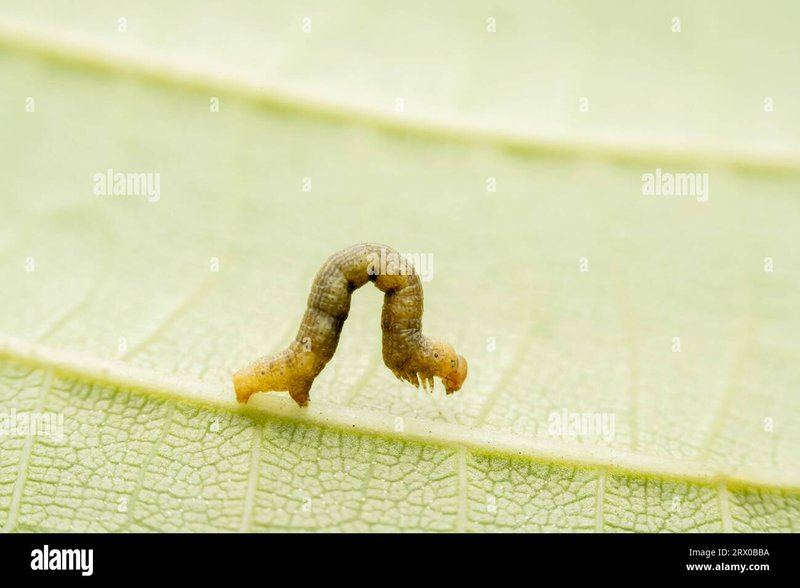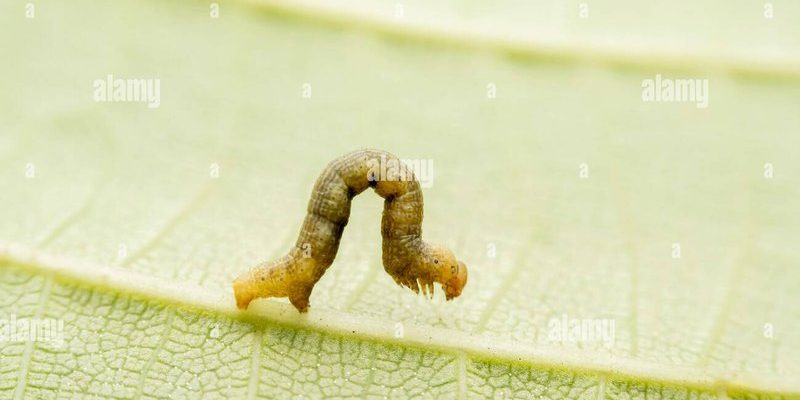
In this article, we’ll dive into the world of **natural predators of inchworms** in forest ecosystems. Picture a food chain as a game of tag, where each link serves a purpose in keeping the balance. We’ll explore who these predators are, how they hunt down inchworms, and why their role is vital to the health of our forests. So, grab a cup of coffee, and let’s dig into this fascinating topic!
Understanding Inchworms and Their Impact
Before we get into who eats inchworms, let’s quickly remind ourselves why they matter. Inchworms, or **measuring worms**, are not actually worms but the larvae of certain moths. They’re famous for inching along leaves and branches, hence the name. By feeding on foliage, they can affect the overall health of trees and plants. If their populations get too high, they can lead to defoliation, which starves the plants and disrupts the ecosystem.
You might be wondering just how serious this can get. Picture a beautiful oak tree. If enough inchworms feast on its leaves, it can become weak and vulnerable to diseases or pests. This situation is where natural predators come in, acting like nature’s security team, keeping the inchworm population in check.
The Role of Birds
One of the most well-known predators of inchworms is birds. Many bird species see these little guys as a tasty snack, especially during breeding season when they need extra protein for their chicks. Think of woodpeckers, warblers, and jays flitting through the trees. They’ll hop and peck at inchworms hiding among the leaves, turning the hunt into a game of hide-and-seek.
Birds are essential for keeping inchworm populations down. Here’s why:
- Species Variety: Different birds have different hunting methods. Some, like the American Robin, scan the ground and trees for inchworms, while others, like chickadees, flit from branch to branch, ready to pounce.
- Volume: A single bird can eat many inchworms in one day, which adds up quickly when you consider all the birds in a forest.
- Adaptability: Birds can adjust their diets based on what’s available, so when inchworm numbers rise, you can bet they’ll take advantage of the feast.
Just consider a family of robins that may consume around 14,000 insects (including inchworms) each season! That’s quite the appetite.
Insects That Hunt Inchworms
Believe it or not, some insects are inchworms’ worst nightmares. Parasitic wasps, for instance, are tiny but mighty. They’ll lay their eggs inside or on inchworms. Once the wasp larva hatches, it starts munching away at the inchworm from the inside. Talk about a gruesome fate!
In addition to parasitic wasps, other predators include:
- Ladybugs: They primarily feast on aphids but will munch on small inchworms if they have to. They’re like the Swiss Army knives of garden eating!
- Predatory Beetles: Beetles like the ground beetle actively hunt inchworms. They’re quick and effective, helping maintain balance in the ecosystem.
These insects are extremely beneficial because they contribute to natural pest control, reducing the need for chemical interventions.
Frogs and Toads as Nighttime Hunters
When night falls in the forest, a different group of predators comes alive: frogs and toads. These amphibians are excellent at catching inchworms, especially those that venture out to keep munching after sunset. Imagine a quiet forest suddenly filled with the croaks of frogs, each one waiting patiently for the perfect moment to snap up a meal.
Frogs and toads have a few advantages when hunting inchworms:
- Camouflage: They blend in well with their surroundings, making it tough for inchworms to spot them.
- Sticky Tongues: These guys have long, sticky tongues that can flick out quickly to catch inchworms in a flash.
- Active Nocturnal Behavior: They come out at night when inchworms might be more vulnerable, making it a perfect time to hunt.
So, the next time you hear frogs croaking under a moonlit sky, remember they’re playing their part in this intricate web of life.
Small Mammals as Part-Time Predators
Not just birds and insects are in on the action; small mammals like mice, shrews, and even chipmunks occasionally snack on inchworms. While they might not be the top predators, they contribute to keeping the inchworm population in check.
Here’s how these little guys help:
- Foraging: Small mammals tend to scurry around looking for food, which means they often come across inchworms during their searches.
- Varied Diet: Since they eat a mix of plant material and various insects, they can adjust to what’s available, including inchworms.
- Life Cycle Influence: By preying on inchworms, these mammals indirectly support the trees and plants that are vital for their own survival.
Their adorable little faces might not scream “predator,” but they play a part in this complex ecosystem.
The Importance of a Balanced Ecosystem
Now that we’ve uncovered the various predators of inchworms, it’s vital to understand why this balance matters. Forest ecosystems function like a delicate symphony, where every member has a role. Removing just one part can lead to chaos.
Keeping inchworm populations under control ensures:
- Healthy Trees: Trees can thrive when their leaves are intact, allowing them to photosynthesize and grow strong.
- Biodiversity: A balanced ecosystem supports various species, creating a rich habitat filled with life.
- Natural Pest Control: Predators maintain the populations of pests like inchworms without the need for human intervention or chemicals.
Without these natural checks, we could see rapid outbreaks of inchworms, leading to widespread damage and affecting other wildlife.
The next time you stroll through a forest and spot an inchworm, remember that it’s part of a larger story—one where every creature, big or small, plays its role. From birds and insects to frogs and small mammals, each predator contributes to a balanced ecosystem that supports the health of trees and plants. It’s a beautiful cycle that reminds us how interconnected nature truly is.
By understanding the natural predators of inchworms, we gain a deeper appreciation for the complexity of forest ecosystems and why it’s essential to protect them. It’s not just about saving a tree or a single species; it’s about preserving the delicate web of life that sustains us all. So, next time you enjoy the outdoors, take a moment to appreciate how every creature, even the inchworm, has its place in the grand tapestry of nature.

